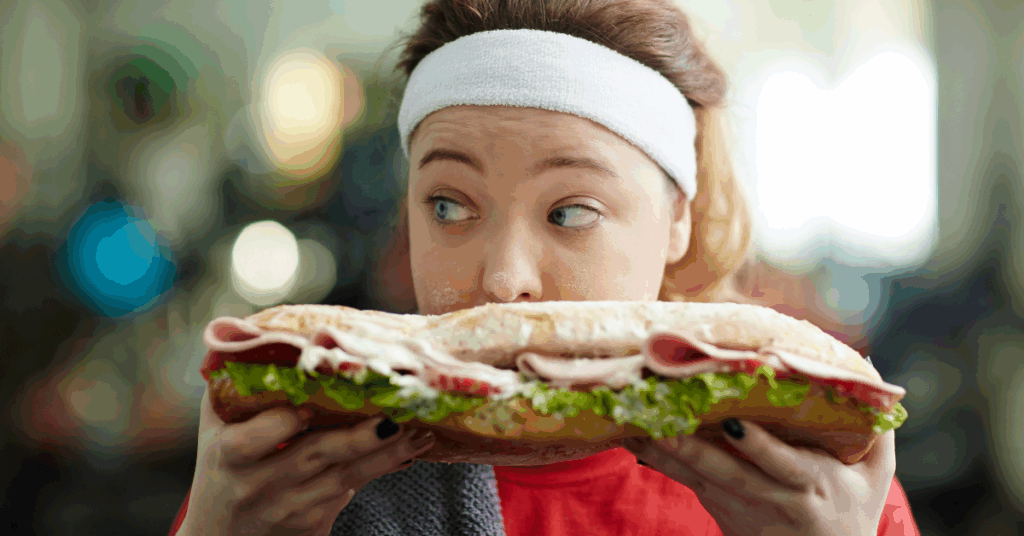
If you´re going through food obsession after gastric balloon, you’re not alone. Many people expect hunger and emotional eating to disappear after the procedure. But the truth is, food obsession after gastric balloon can still show up, and sometimes even intensify. That doesn’t mean you’ve failed. It means your relationship with food needs just as much healing as your body does.
Let’s explore why your mind may still be fixated on food, even when your stomach feels full. Understanding what’s happening beneath the surface can help you move forward with compassion and clarity.
Food Obsession After Gastric Balloon Starts in the Brain
Your stomach might have changed, but your habits, patterns, and triggers didn’t vanish with it. After years of using food to cope with stress, boredom, or sadness, your brain still turns to it for comfort. Even when you physically can’t eat as much, the desire can remain loud and persistent. It’s a sign that deeper emotional work is needed.
Food obsession after gastric balloon isn’t just about willpower,it’s about emotional wiring. Just like muscles remember movement, your mind remembers the relief food once gave. It takes time, therapy, and new routines to rewire those responses. You’re not broken; you’re just human.
It’s important to realize that a smaller stomach doesn’t fix old thoughts. The brain is wired for patterns, especially ones that gave quick relief. This is why emotional hunger can linger, even when your appetite fades. Change takes intention, not just a medical device.
Emotional Eating After Gastric Balloon: Why It Still Happens
There’s a difference between physical and emotional hunger, but after the gastric balloon, they can feel confusing. Physical hunger fades faster. Emotional hunger is sneaky, it hits suddenly and craves specific foods. And it often comes with guilt, shame, or frustration.
When food still feels like a source of comfort, it means you’re still in recovery, not failure. Recognizing emotional hunger is a skill you can develop. Start by pausing when a craving hits. Ask yourself: Am I really hungry, or is this something else?
As you practice this awareness, patterns will emerge. Maybe stress always triggers the need for sweets. Perhaps loneliness makes you think of food more. Identifying these moments helps you take back control with kindness.
Restriction and Food Obsession After Gastric Balloon
Sometimes the stricter you become with food, the more obsessed your brain gets. If you constantly tell yourself what you can’t have, your desire for those things grows stronger. This isn’t weakness, it’s biology. Your brain sees restriction as a threat and tries to protect you.
Instead of extreme control, try curiosity and flexibility. What would it feel like to eat without shame? Could you trust your body to guide you? Healing means feeding both your body and your mind with compassion.
Food obsession after gastric balloon often grows stronger in a state of fear. As a result, when you repeatedly deny yourself without having the emotional tools to support the change, food begins to dominate your thoughts. Furthermore, each act of restriction reinforces the sense that eating is dangerous or shameful, which intensifies the craving. Ultimately, you deserve a peaceful relationship with food, not a battle.
Body Image and Cravings After Gastric Balloon
Food obsession isn’t always about food, it’s often tied to how we feel about our bodies. After weight loss procedures, many people struggle to accept their new reflection. You might still feel “big” or fear regaining weight. These thoughts fuel anxiety, which can trigger obsessive thinking around meals.
The more pressure you put on eating “perfectly,” the more power food holds. Body image healing takes time, but it’s essential to breaking the obsession cycle. Be gentle with yourself as your mind catches up to your transformation. Real change happens when you accept yourself in the now.
When your self-worth is tied to weight, every bite feels loaded with meaning. Unraveling this takes courage. Focus on how your body functions, not just how it looks. Strength, energy, and confidence are better indicators of success.
Therapy for Food Obsession After Gastric Balloon
No one should go through this journey alone. Talking to a therapist who understands bariatric or balloon-related struggles can make a world of difference. Emotional eating isn’t just a habit,it’s a coping tool you learned to survive. Replacing it takes time and guidance.
Support groups, journaling, or even regular check-ins with a friend can help. When you feel seen and validated, food loses its grip. The more you name what you’re feeling, the less likely you’ll need to numb it with eating. It’s about replacing silence with support.
Therapy also helps reframe negative thoughts. Instead of “I’m failing,” you start to hear “I’m healing.” Having someone to walk beside you makes the path feel less overwhelming. You’re not weak for needing help, you’re wise for seeking it.
Releasing Guilt Around Food Obsession After Gastric Balloon
Many people silently struggle with food obsession after gastric balloon placement. But just because it’s not often talked about doesn’t mean it’s rare. Your experience is valid, and fixable. There is nothing wrong with needing emotional support after a physical change.
You’re not doing anything wrong. You’re just facing the next layer of healing. Keep asking questions, stay curious, and give yourself the same grace you’d offer someone you love. Compassion is the real secret to sustainable change.
There’s no perfect path to recovery. Each step you take brings new insight. What matters most is your willingness to grow. The more patient you are with yourself, the easier healing becomes, contact us today for a consultation.
